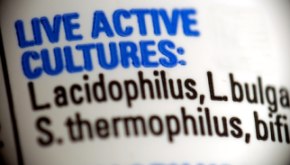How To Make Yogurt --- Without A Yogurt Maker
Here is all you need
to know on how to make yogurt quickly and inexpensively without a
yogurt maker. The health benefits of yogurt can be inexpensively
enjoyed from your own kitchen.
I must credit my friend Lydia for teaching me how to make yogurt without a yogurt maker. The following yogurt recipes and tips are a combination of what I learned from Lydia and my own yogurt experimenting.
Materials and Instructions for How to Make Yogurt
(Yield: approximately 2 quarts of yogurt)
- 2 Quarts of milk
- 1 Tablespoon (rounded) of commercial yogurt
- Clean, non-metallic containers, preferably glass
- A candy thermometer
- A clean whisk
- A warm insulted container such as an ice chest or an oven set at 100° F.
On top of the stove, bring the milk to about 115° F. Remove the milk from the stove. Immediately whisk in the commercial yogurt. Pour into containers and cover with a plastic wrap. Place the containers in the cooler or oven and leave them undisturbed for 6 to 10 hours. Remove the yogurt and chill in the refrigerator. When it’s cold, enjoy the yogurt!
How to Make Yogurt ...Even Better!

Health Benefits of Yogurt
Yogurt has all of the nutrients found in milk such as calcium, phosphorus, Vitamins B2 and B12 and protein and minerals, such as potassium and magnesium. Added to all these milk nutrients are the live, friendly bacteria that changes milk into yogurt. This friendly bacteria elevates yogurt far above milk.According to WebMD, the bacteria found in yogurt has several health benefits. The “live and active” bacterial strains are what your body needs to enhance healthy digestion. The friendly bacteria enhance the immune response, therefore boosting the immune system. The bacteria may also prevent yeast infections in women. If you want to bypass off of the yogurt but still get the wellness benefits of friendly bacteria, try an excellent probiotic supplement. Enjoy your yogurt for your good health and delicious eating!
Go
From How to Make Yogurt toTop Foods
Go
From How to Make Yogurt to HOME of Wellness With Natural Health
Supplements




